The Gallery will be open until 9pm this Friday, Saturday and Sunday.
Russian-born George Lambert came to Australia as a teenager, by which time he demonstrated a prodigious talent in drawing. He worked as a jackeroo on his great-uncle’s property near Gilgandra, New South Wales before being advised to go to art school. He won the Wynne Prize in 1899, and in 1900 he left for Europe having been awarded the NSW Society of Artists’ Travelling Scholarship. He remained abroad until 1921, studying and working in Paris and London and serving as an official war artist with the Australian Imperial Force.
Self portrait with gladioli, arguably the most definitive of Lambert’s several self portraits, was painted after he became the first Australian artist elected as an associate of the Royal Academy in London, and following his return to Australia. The artist stands beside a cut-crystal vase arranged with plumes of gladioli, wearing a dandyish corduroy cuffed smoking jacket. In a letter Lambert wrote to his wife Amy in 1921 he plays up to the perceived image of him as foppish aesthete: ‘I am a luxury, a hot house rarity … Scoffed at for preciousness. Despised for resembling a chippendale chair in a country where timber is cheap.’ And yet, Lambert was a working artist – and his hands, strong and indelicate, are those of a craftsman.
Gift of John Schaeffer AO 2003. Donated through the Australian Government's Cultural Gifts Program.
Self portrait with gladioli by George Lambert. This is a commanding oil painting on canvas and including the frame, 159cm high and 132cm wide. The elaborate gold frame has a double edge and is approximately 30cm wide with ornate textured, gold foliage decorating the corners and central sections of each side.
George is larger than life, from his upper thigh to the crown of his head, wearing a luxurious robe and assuming a flamboyant pose. Standing at ease, his back arched, with one hand on his hip and the other hand extended upwards in an affected gesture.
George stands in the centre of the composition, against a matt, deep purple background. His body is on an angle with his left upper arm obscured from view, and his face turned towards us.
George’s hairline is receding. His remaining hair is short and swept back behind his ears, revealing right ear. His hair is light brown, with blond and copper highlights. His pale, dome shaped forehead has a sheen across it. He has a slightly furrowed brow, between full eyebrows, drawn over hazel eyes hooded with heavy eyelids. He looks directly at us with a weary yet quizzical gaze.
His cheeks are flushed a rosy pink and his nose is long and straight with flared nostrils. He has a neat manicured moustache, the ends of which are waxed and turned upwards, extending just beyond the slightly upturned corners of his mouth. His pink, full lips are closed around a black pipe, which dangles from the left-hand side of his mouth. His well- groomed beard follows his jaw line, trimmed close to his cheeks and then from his chin it is longer, thicker and shaped to a blunt point.
He wears a sumptuous old gold velvet smoking jacket with wide, dark taupe corduroy lapels and cuffs, with deep pockets on either side in the front.
The jacket gapes at the front, revealing his slim chest. Around his neck, the stiff high collar of an ivory, cotton dress shirt over which is draped a long violet and white silk scarf and the hint of a dark taupe and gold ribbon.
The velvet fabric hangs in heavy folds around his slight frame, cinched in at the waist with a belt tied in a bow. The jacket is lined with mustard satin that is only visible inside the left sleeve opening. The ample sleeves of the jacket fall back to his wrists, flaunting french cuffs and cuff links. His left arm is held mid-air and crooked at the elbow, palm facing out, fingers stretched up and curled in.
His right hand is deliberately placed on his right hip, with thumb to the rear and fingers with swollen knuckles splayed.
In the lower right-hand corner is a glass vase with a curved handle containing four stems of gladioli of varying lengths and colours red, pink and creamy white. In the lower left-hand corner is the artist’s signature, G. Lambert, Sydney 1922.
Audio description written by Sally Dawson and voiced by Rory Walker
George Lambert (age 49 in 1922)
John Schaeffer AO (1 portrait)



On one level The Companion talks about the most famous and frontline Australians, but on another it tells us about ourselves.
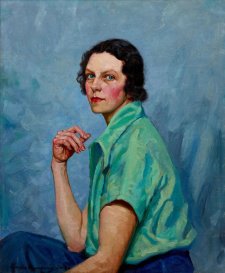
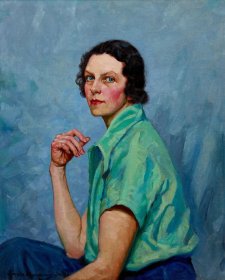
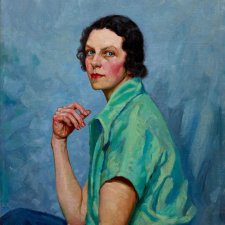
Archie 100 curator (and detective) Natalie Wilson’s nationwide search for Archibald portraits unearthed the fascinating stories behind some long-lost treasures.
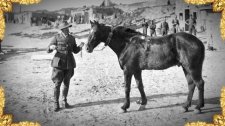
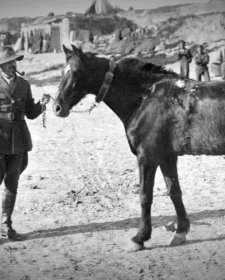
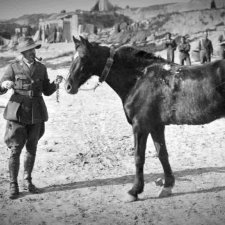
An examination of the life and times of George Lambert through the gesture and pose in his self portrait.